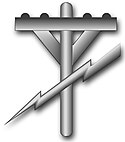
An electrician is a tradesperson specializing in electrical wiring of buildings, transmission lines, stationary machines, and related equipment. Electricians may be employed in the installation of new electrical components or the maintenance and repair of existing electrical infrastructure. Electricians may also specialize in wiring ships, airplanes, and other mobile platforms, as well as data and cable lines.
The Enlisted Aviation Warfare Specialist (EAWS) insignia is a military badge of the United States Navy which was created in March 1980. The insignia recognizes those members of the Navy's enlisted force who have acquired the specific professional skills, knowledge, and military experience that result in qualification for service in the aviation activities of the Navy. This includes most personnel who are trained flight deck personnel onboard aircraft carriers, or maintenance personnel at an Aircraft Intermediate Maintenance Detachment or Department (AIMD) or aircraft squadron.
Seafaring is a tradition that encompasses a variety of professions and ranks. Each of these roles carries unique responsibilities that are integral to the successful operation of a seafaring vessel. A ship's crew can generally be divided into four main categories: the deck department, the engineering department, the steward's department, and other. The reasoning behind this is that a ship's bridge, filled with sophisticated navigational equipment, requires skills differing from those used on deck operations – such as berthing, cargo and/or military devices – which in turn requires skills different from those used in a ship's engine room and propulsion, and so on.
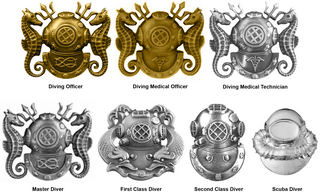
The United States Navy master diver is the highest warfare qualification obtainable by a member of U.S. Navy diving community. A master diver is an enlisted person who typically has the most experience and knowledge on all aspects of diving and underwater salvage.

Aviation electronics technician (AT) is a US Navy enlisted rating or job specialty. At the paygrade of E-9, ATs merge with the aviation electrician's mate (AE) rating to become avionics technicians (AV). There has been talk of completely merging the two ratings, but as yet no definite plans have been announced. Aviation electronics technicians wear the specialty mark of a winged helium atom.

Aviation Electrician's Mate is a United States Navy occupational rating.
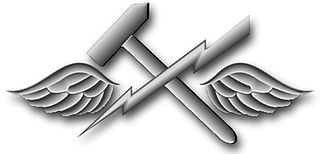
Aviation Support Equipment Technician is a United States Navy occupational rating. The United States Marine Corps currently maintains 3 separate aviation support equipment military occupational specialties. They are: 6071, 6072 aircraft maintenance support equipment hydraulic/ pneumatic structures mechanic and 6073 aircraft maintenance support equipment electrician / refrigeration mechanic.
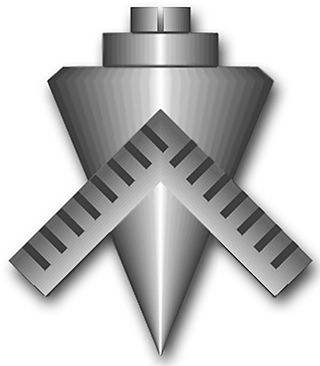
Builder is a United States Navy occupational rating. A builder is responsible for the construction and repair of wood, concrete, and masonry structures. Their work can involve sheet rock, ceramic tile, or painting, while senior personnel deal with material estimates and labor projections. Builders also conduct the Navy's combat and disaster preparedness operations.
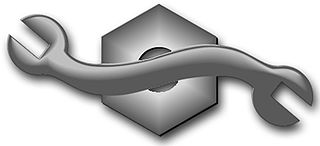
Construction mechanic is a United States Navy occupational rating.

Engineering aide is a United States Navy occupational rating.

Equipment operator is a United States Navy occupational rating.

Steelworker is a United States Navy occupational rating.

Utilitiesman is a United States Navy occupational rating.

Electrician's Mate is a United States Navy and United States Coast Guard occupational rating. The Electrician's Mate's NOS is B210.

Engineman is a United States Navy occupational rating. Engineman was the former name for the current U.S. Coast Guard rating of Machinery Technician.
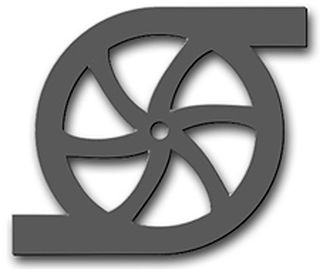
Gas turbine systems technicians is a United States Navy occupational rating.

The United States Navy job rating of electronics technician (ET) is a designation given by the Bureau of Naval Personnel (BUPERS) to enlisted members who satisfactorily complete initial Electronics Technician "A" school training.
The Radio Materiel School (RMS) was the first electronics training facility of America’s military organizations. Operated by the United States Navy, it produced during the 1920s and 1930s the core of senior maintenance specialists for the Navy’s communication equipment, that according to USN fleet admiral Chester W. Nimitz “paved the way to United States world leadership in electronics.”
